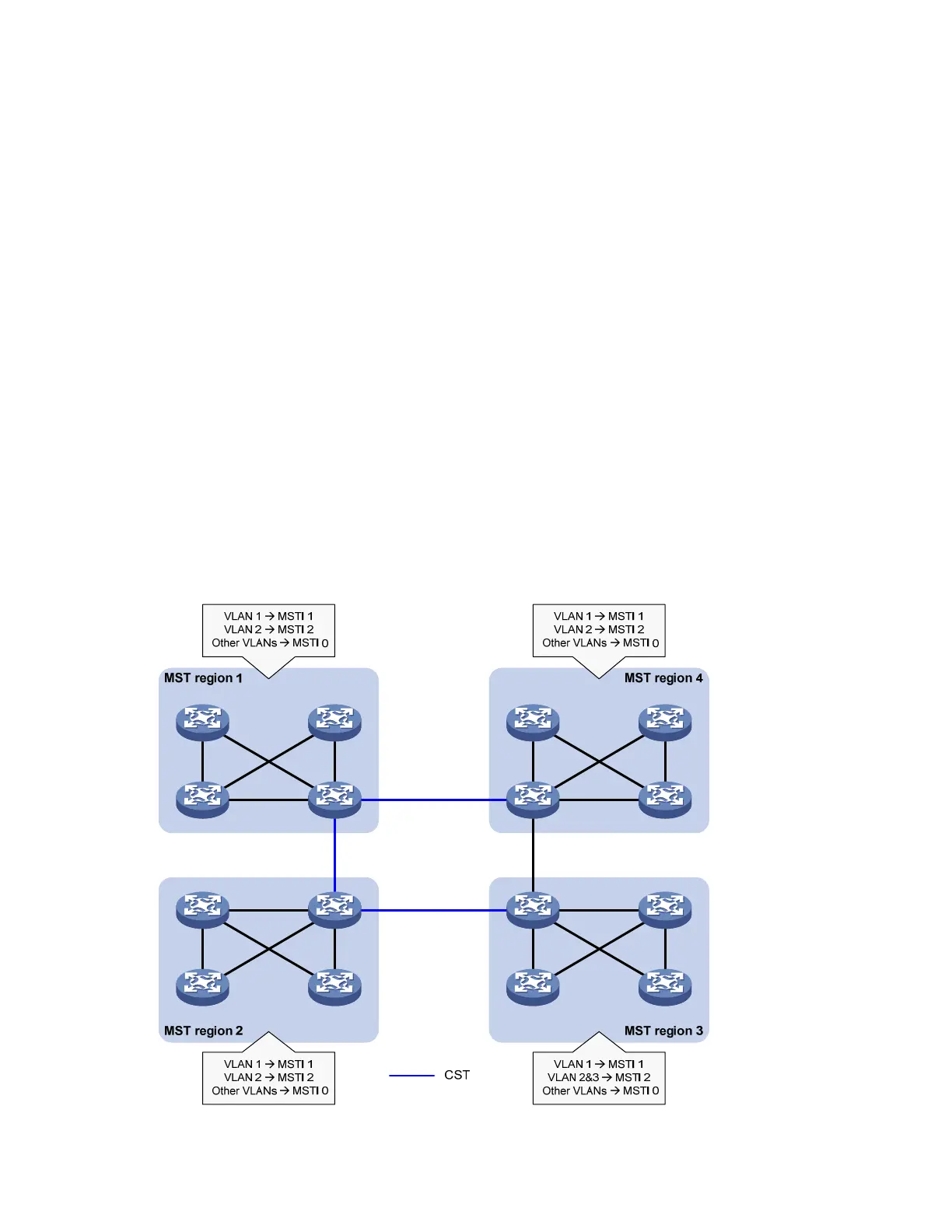65
Although RSTP supports rapid network convergence, it has the same drawback as STP—All bridges within
a LAN share the same spanning tree, so redundant links cannot be blocked based on VLAN, and the
packets of all VLANs are forwarded along the same spanning tree.
Features of MSTP
Developed based on IEEE 802.1s, MSTP overcomes the limitations of STP and RSTP. In addition to the
support for rapid network convergence, it allows data flows of different VLANs to be forwarded along
separate paths, providing a better load sharing mechanism for redundant links. For more information
about VLANs, see the chapter “VLAN configuration.”
MSTP includes the following features:
• MSTP supports mapping VLANs to spanning tree instances by means of a VLAN-to-instance
mapping table. MSTP can reduce communication overheads and resource usage by mapping
multiple VLANs to one instance.
• MSTP divides a switched network into multiple regions, each containing multiple spanning trees that
are independent of one another.
• MSTP prunes a loop network into a loop-free tree avoiding proliferation and endless cycling of
packets in a loop network. In addition, it provides multiple redundant paths for data forwarding
supporting load balancing of VLAN data.
• MSTP is compatible with STP and RSTP.
Basic concepts in MSTP
Figure 20 Basic concepts in MSTP

